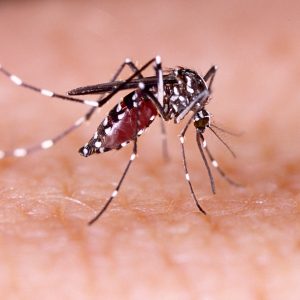The world is reeling in fear of the coronavirus, and it sure spells doom. However, this is not the first time that the world is dealing with deadly viruses. Several pandemics in the past took a toll on the life of people, and COVID-19 is nothing different.
The total number of cases around the world is 3,138,989 at the time of writing this article—deaths from COVID-19 stand at 218,013 across the globe. However, there’s light at the end of the tunnel. According to the World Health Organization (WHO), 956,094 people have recovered from the virus. While the COVID-19 scare is real, here are five of the worst pandemics the world has seen and how humanity has come out stronger!
The Great Plague:
The bubonic plague was the second pandemic the world witnessed in the 1600s. Claiming over a million lives, the plague lasted from 1665 until the1750. Originating in China, the plague spread through flea that had bitten an infected rat.
The Great Plague claimed numerous lives, apparently around a quarter of London’s population at that time. According to some sources, it was The Great Fire of London in September 1966 that finally ended the plague. The fire killed a lot of rats and fleas, which were carriers of the disease. It, thus, put an end to the plague.
The Spanish Flu:

The influenza pandemic or the Spanish flu gets its name not because of its origin in Spanish, but because Spain was the only nation that reported it. Yes, this plague broke out around the time of World War I with press restrictions in place. Hence, most countries in the world had not reported the outbreak.
The virus spread through the bodily fluids of an infected person’s coughs or sneezes. Over 500 million people died, which is around one-third of the world’s population in that day and age. However, by the year 1919, traces of the virus started disappearing with people developing immunity to it. The consistent exposure to the virus over several years and decades meant people’s bodies were ready to combat the virus, and thus developing what is otherwise known as the herd immunity.
Swine Flu:
The H1N1 virus that caused the Spanish Flu outbreak was the Swine Flu outbreak in the year 2009. The virus spread fast and had over 700 million people infected. According to reports from WHO, deaths from the Swine Flu stands at 18,000. This pandemic came to an end with the discovery of a vaccine in October 2009. The following year, the World Health Organization declared the end of the Swine Flu as a pandemic.
Ebola:

The most recent hemorrhagic fever to affect the world was the Ebola virus. The term hemorrhagic refers to the viral infections that affect both humans and animals. This was one such infection that had its origin in the animal kingdom and spread to humans. The virus spreads from the infected person’s blood or bodily fluids. It is one of the deadliest viruses and has symptoms similar to most influenza viruses.
A person with Ebola experiences severe weakness, cold, high fever, and loss of appetite. While the mortality rate from this virus was high, the likelihood of catching the virus was relatively low. The first outbreak of Ebola was in Sudan in 1976, and the most recent case was in 2018 in the Kivu province in Congo. Cyprien Mubiala lost around 15 members in his family to Ebola, and it was the antibodies in his blood that paved the way to the discovery of the cure for this deadly virus.
Zika:

Transmitted by the Aedes mosquitoes, the Zika virus made its first appearance in 1947 in Uganda, and there are still many active cases across the world. However, the recent outbreak of this virus was in 2015, and the Centers for Disease Control and Prevention (CDC) went on to impose travel restrictions on certain countries in general and pregnant women in specific. The virus had the potential to affect the unborn in the womb. While there’s no vaccine yet to fight this virus, experts suggest protecting oneself from mosquito bites as the best way to prevent catching the infection.
While all these viruses had an impact on human life and went on to change the course of history. However, one thing they all have in common is that they did come to an end. Life was back to normalcy. So, let us hope that COVID-19 scare ends, too!





